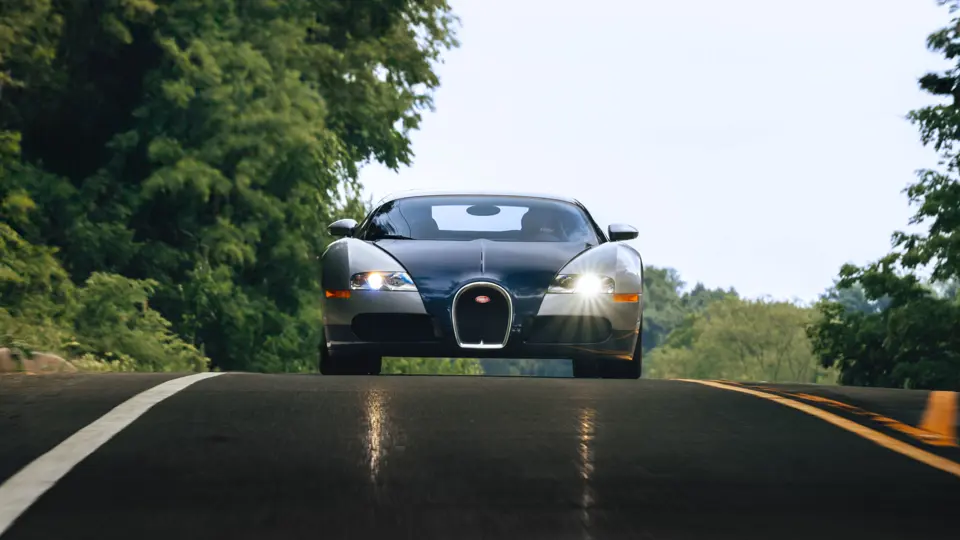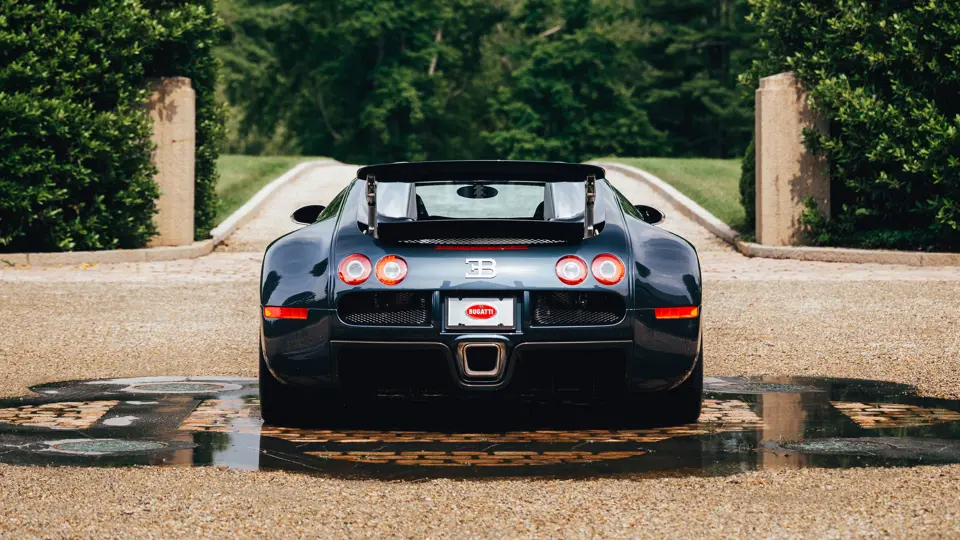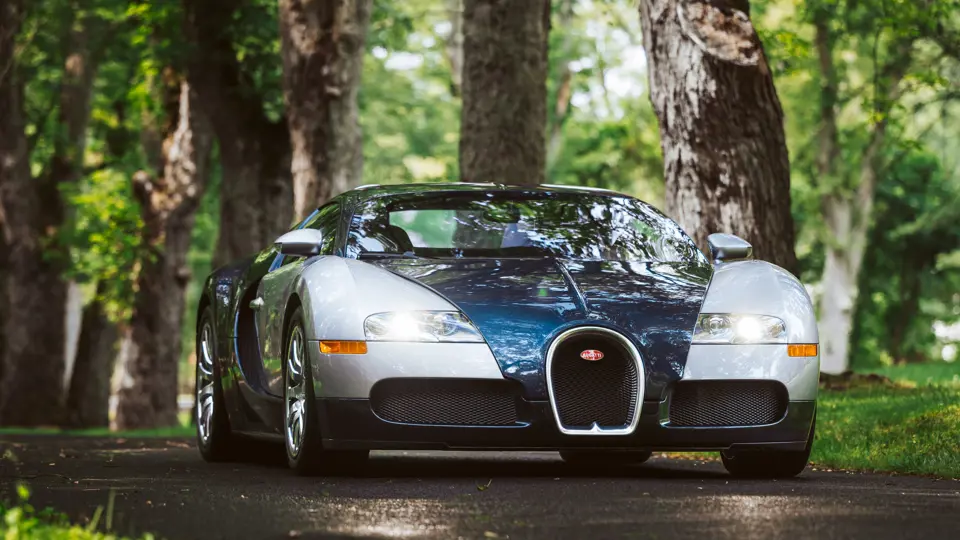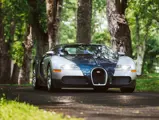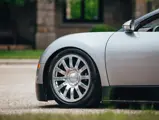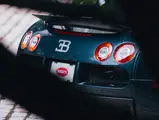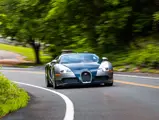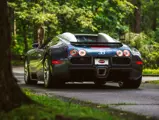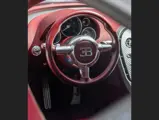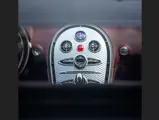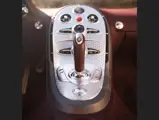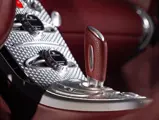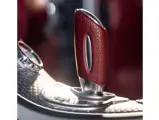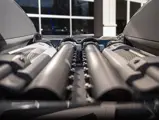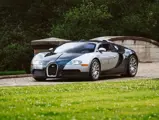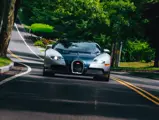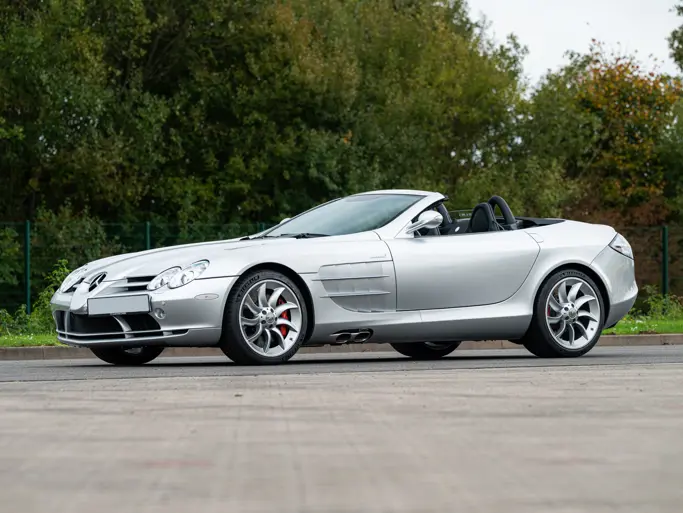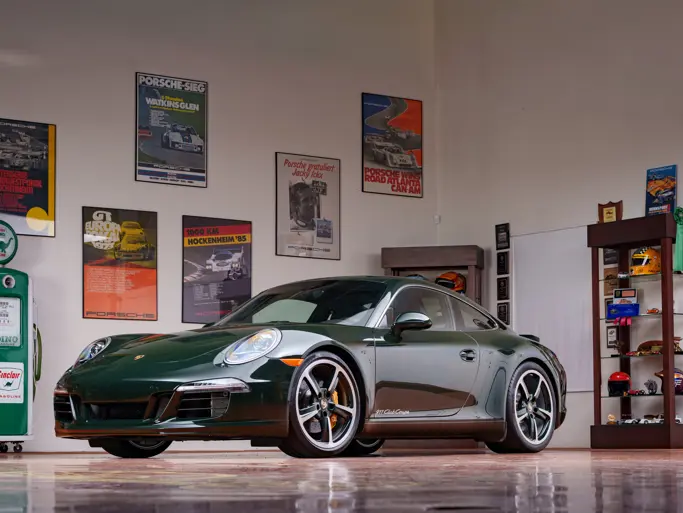
2006 Bugatti Veyron 16.4
{{lr.item.text}}
$1,490,000 USD | Sold
{{bidding.lot.reserveStatusFormatted}}
- The 13th of 252 Bugatti Veyron 16.4 coupes and the second U.S.-specification example produced
- Showing just 3,022 miles on the odometer at the time of cataloging
- Finished in Silver Metallic and Dark Blue Metallic over Grenadine leather
- Powered by an 8.0-liter quad-turbocharged 16-cylinder engine rated at 987 hp and capable of an astonishing top speed of 253 mph
- Documented by service invoices dating from 2009
- The modern era’s groundbreaking supercar of monumental capability and significance
Few cars ever debut and utterly change how a category is defined. The Bugatti Veyron is one of those rare and incredible instances.
To fully understand the Veyron, one must also understand the man who initiated its development. Ferdinand Piech, grandson of Ferdinand Porsche, graduated from ETH Zurich with a degree in mechanical engineering. His thesis focused on the development of Formula One engines, which would set the tone for his entire automotive career. Beginning with his efforts at the company his family started, Piech worked on the development of the Porsche 906 race car and the subsequent chassis that led up to the dominant 917 of the late 1960s and early ’70s. In 1972, he made the move over to Audi in Ingolsadt. As the manager of technical engineering, he developed the Audi 80 and 100. The first became 1973 European Car of the Year, while the latter was Audi’s most commercially successful vehicle built to that point.
In 1977 Piech directed Audi’s entry into the World Rally Championship. That car would turn out to be the fabled all-wheel-drive Quattro. Up until 1988, he remained the head of technical development, fortifying Audi’s brand profile through developments like turbocharging, quattro driveline, and lightweight aluminum construction. His time at Audi is defined by his role in bringing the company up to the highest echelons of the German automotive industry alongside BMW and Mercedes-Benz.
In 1993 Piech became Volkswagen AG’s chairman of the board of management. From this position, he engaged in aggressive moves into various markets. He was responsible for bringing Volkswagen and Audi upmarket and acquiring brands like Bentley and Lamborghini. Most importantly, he established the newly reinvigorated Bugatti Automobiles S.A.S.
Ferdinand Piech laid down a grand vision of what a modern Bugatti had to be and set up specific targets for the engineering team. Money was no object when it came to development or production, as he wanted to harness the very pinnacle of Volkswagen Auto Group’s engineering capabilities. It had to be the fastest and most powerful road-going production vehicle on the planet.
Arguably the very first “hyper car,” the Veyron was an assault of staggering numbers: 987 horsepower, 253-mph top speed, 0–60 in 2.5 seconds. This impressive amount of power could only be produced by an equally impressive engine: 8.0 liters, 16 cylinders formed in a W configuration, and four turbochargers—hence the 16.4 moniker. The necessity of small packaging resulted in extreme levels of heat, and as such, 10 radiators were employed throughout the car to ensure everything stayed within proper operating temperatures. To control the insane amount of power and make it usable, a Haldex all-wheel-drive system and a dual clutch, direct-shift gearbox were employed.
In standard driving mode, the Veyron’s everyday top speed was limited to a modest 213 mph. In order to tap the additional 40 mph, the car would undergo an incredible transformation. Top-speed mode was initiated with the input of a dedicated “speed key” next to the driver’s seat. The Veyron then lowered itself to a ride height of just 2.6 inches and retracted the rear wing while also shutting the front air diffusers. In this hyper state, the Veyron became much more aerodynamic with a drag coefficient of just 0.36.
A car capable of this level of speed was only as good as its ability to stop. As such, massive 15.8-inch front and 15-inch rear cross-drilled, radially ventilated carbon-fiber reinforced silicon-carbide composite discs in conjunction with aluminum six-piston monobloc calipers built by AP Racing were responsible for bringing the vehicle reliably and safely to rest. At speeds above 120 mph, application of the brakes also snapped the rear wing up and forward into an air-brake position. In total, a maximum deceleration force of 1.3 g is capable on road tires. Almost as impressive as the top speed itself, it only took 10 seconds for the Veyron to go from 250 mph to a complete standstill. In total, just 252 Veyron 16.4 coupes would see production, though other variants would follow, including an open-top version.
This exceptional Veyron 16.4, chassis number 013, is immensely stylish with its Silver and Dark Blue metallic two-tone color scheme over a sumptuous Grenadine leather interior with optional sport seats. The second Veyron built for the United States market, it was originally delivered to Florida and has subsequently been registered in Pennsylvania and Montana. Invoices on file dating back to 2009 document the tens of thousands of dollars spent over the years to maintain this spectacular machine. In September 2023, the car received its latest annual service, and in May 2022, four new tires were mounted. With just 3,022 miles on the odometer at the time of cataloging, the car presents an extraordinary opportunity to acquire one of the world’s most celebrated and collectible limited-production supercars.
The vision of one of Germany’s most impressive engineers, the Bugatti Veyron erupted onto the scene like a force of nature and eternally changed the metrics for what exactly constitutes a “super” car. Since its introduction, manufacturers have been playing catchup attempting to get onto the same performance level. It was not until nearly a decade later, with the introduction of the LaFerrari, McLaren P1, and Porsche 918 Spyder, that we saw production vehicles surpass the Veyron’s initial capabilities. A watershed moment for the automotive industry, this Bugatti will forever go down as the car that changed it all.
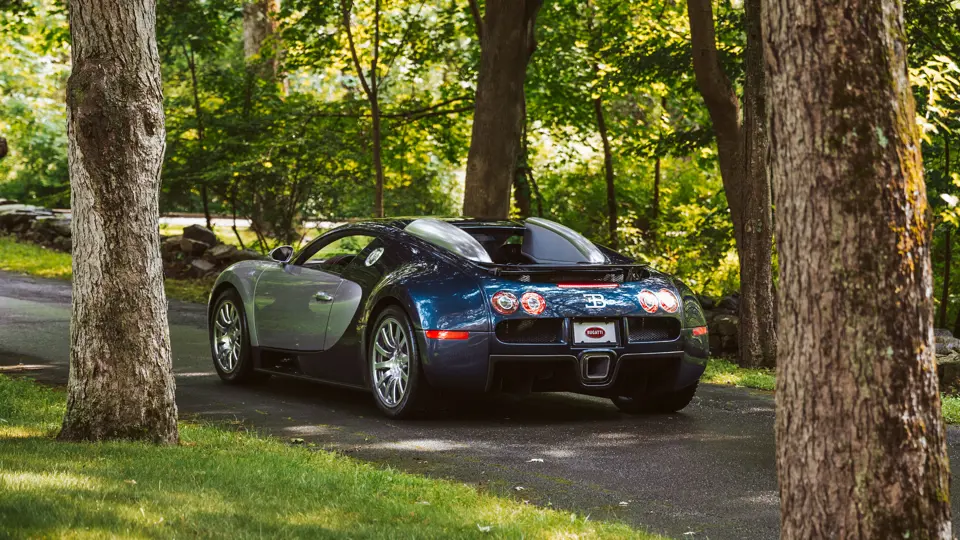

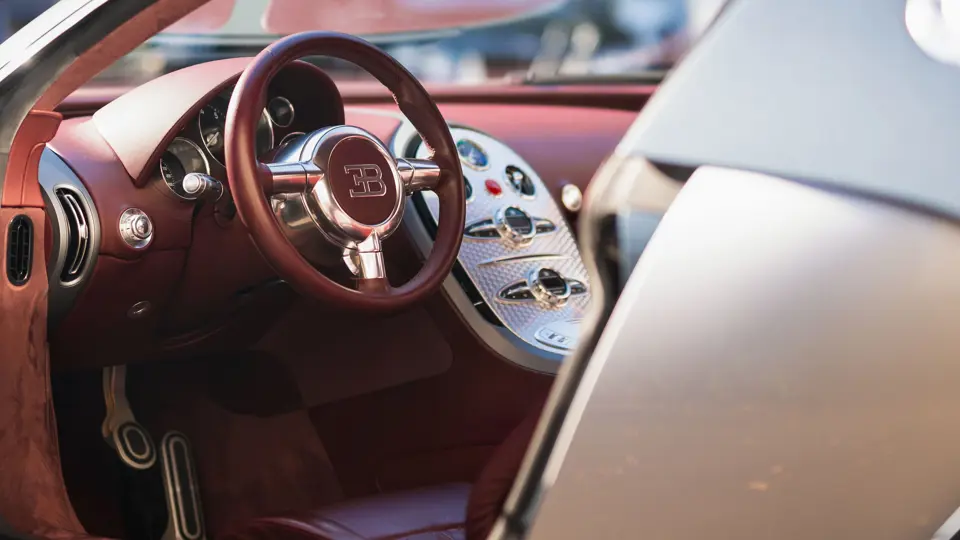


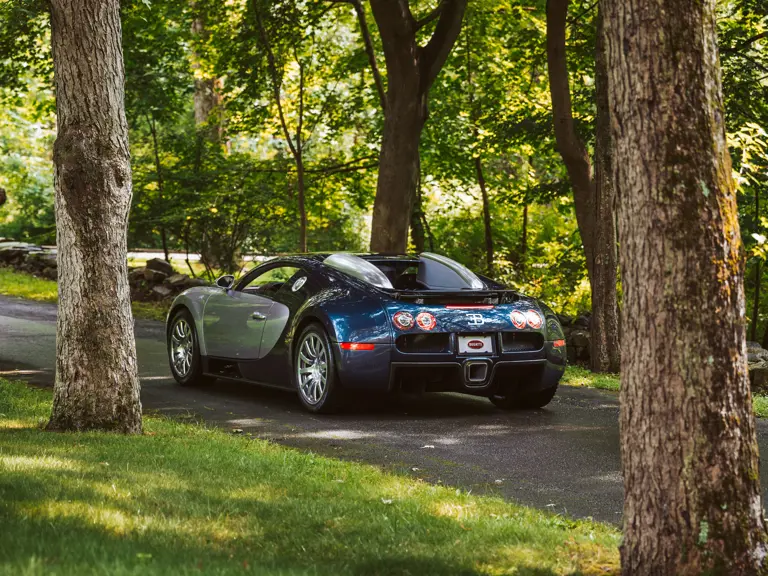
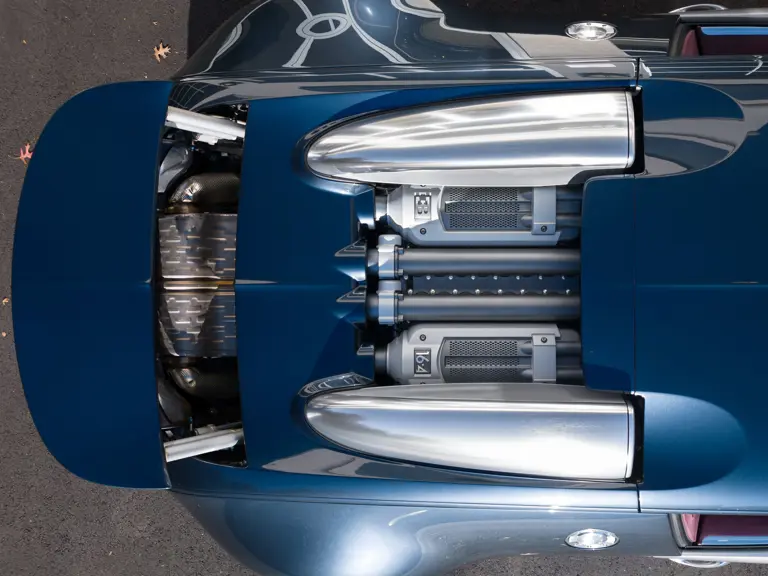

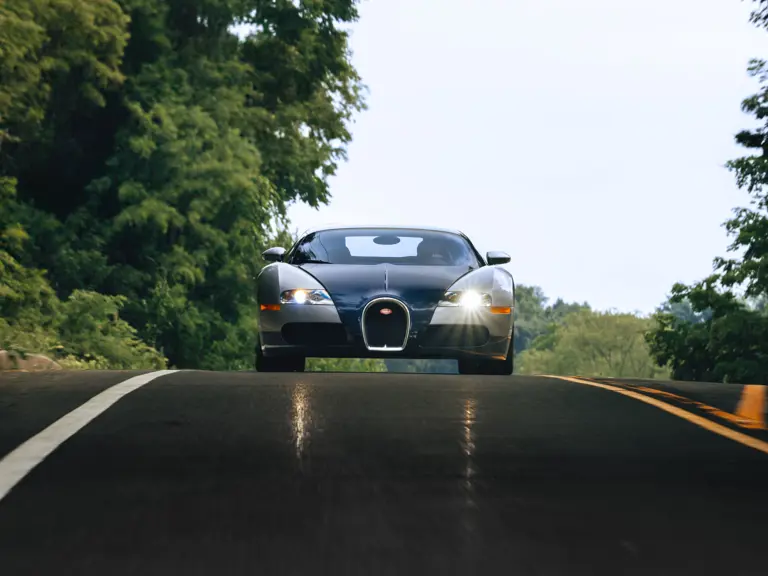
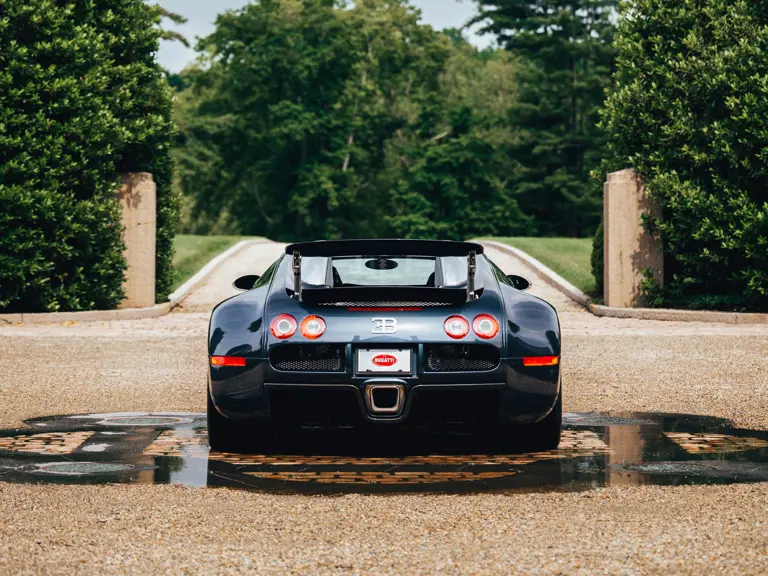
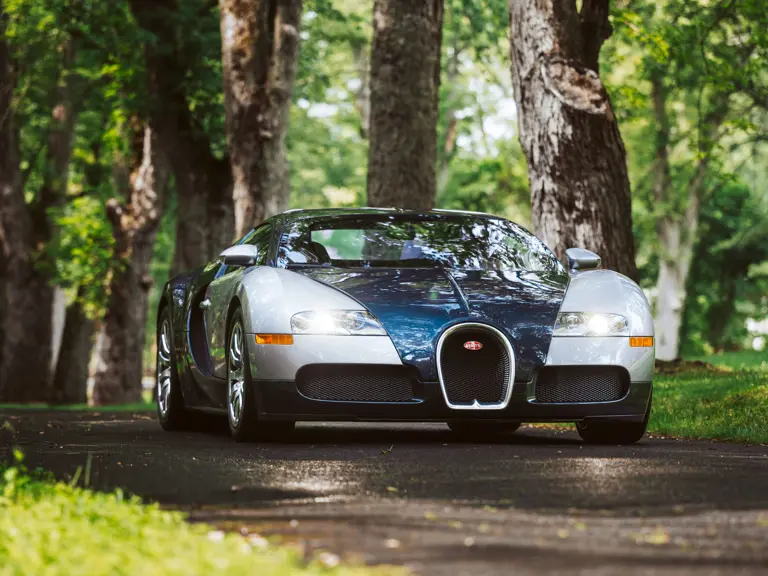
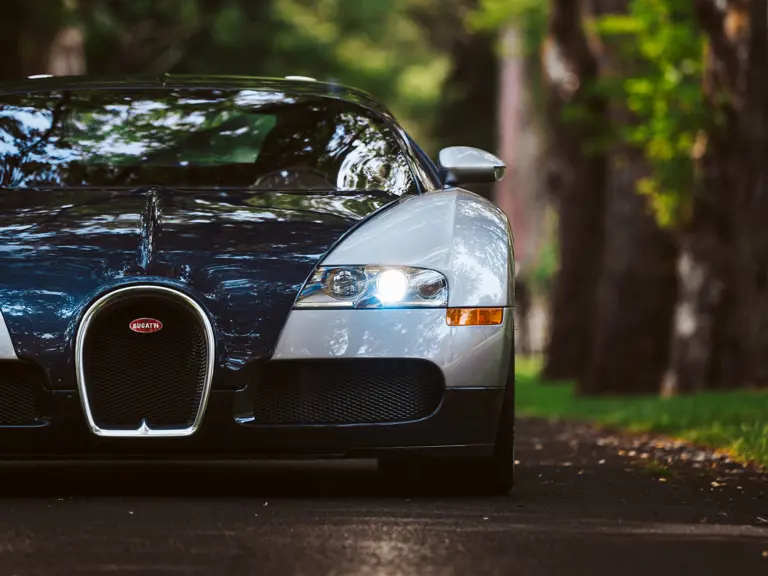
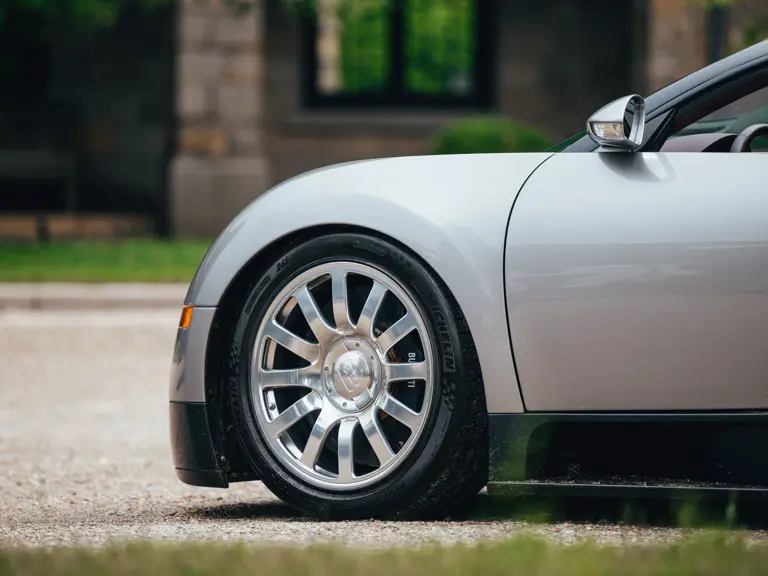
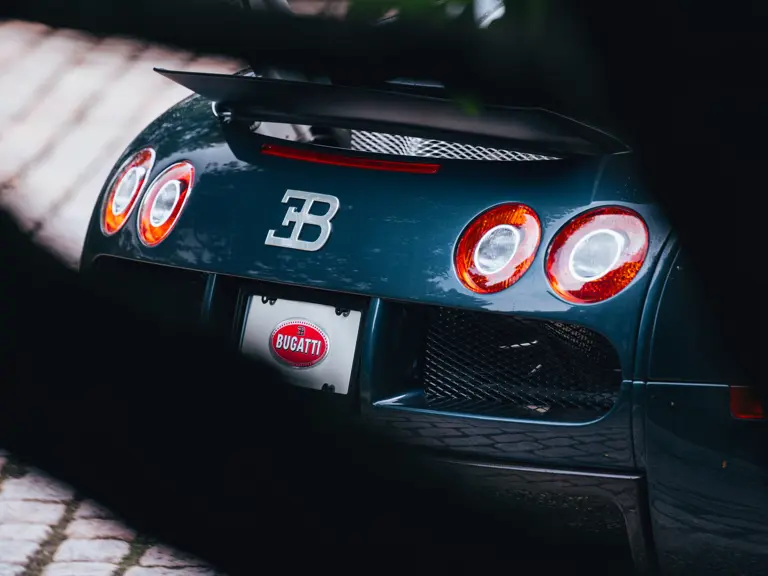

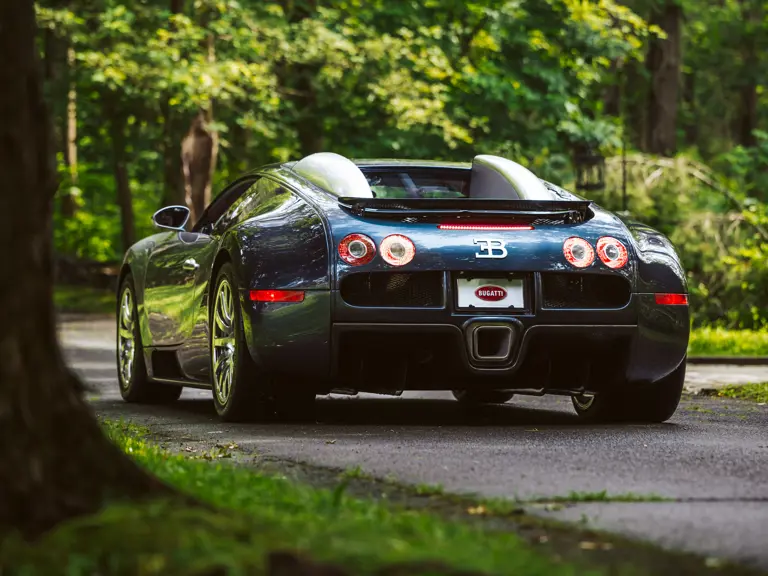
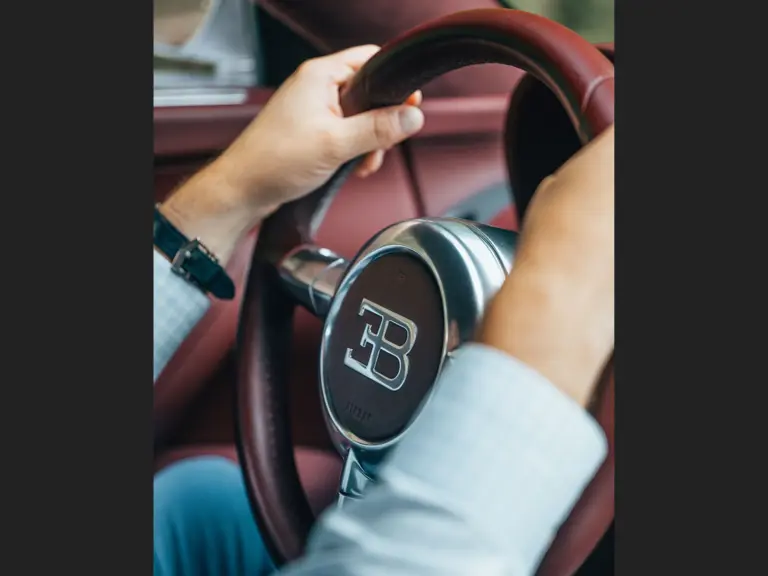
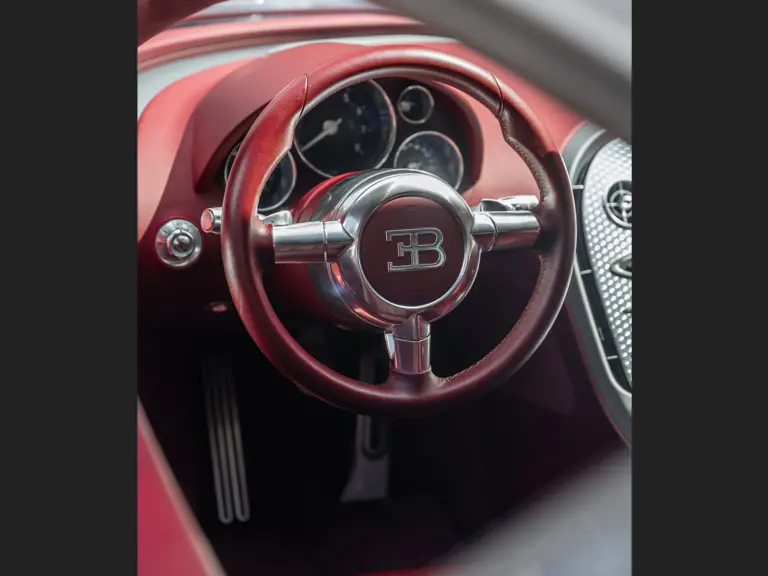
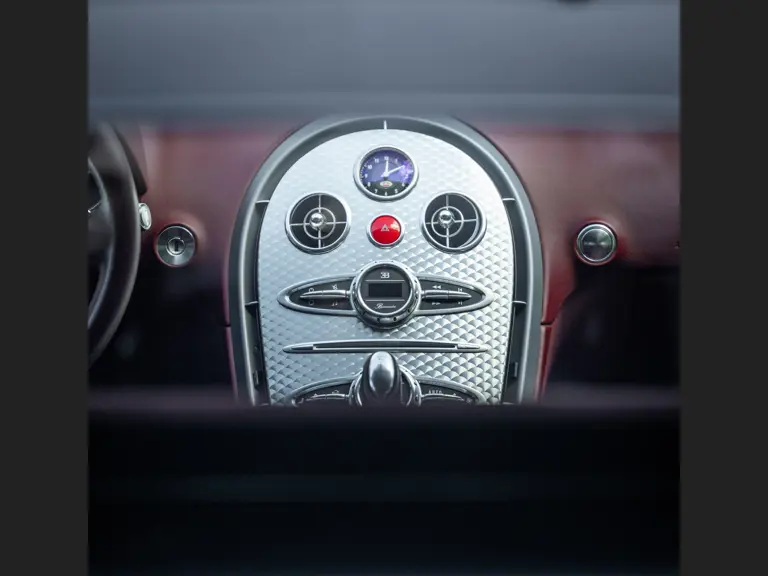
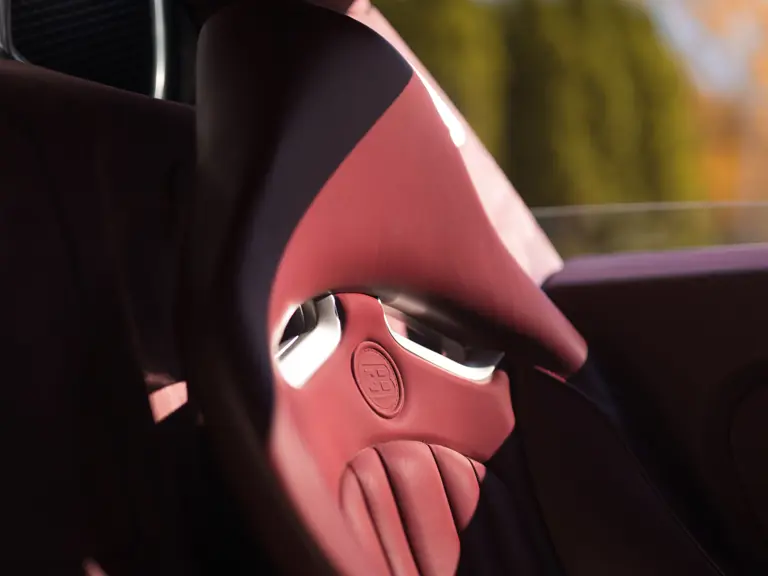


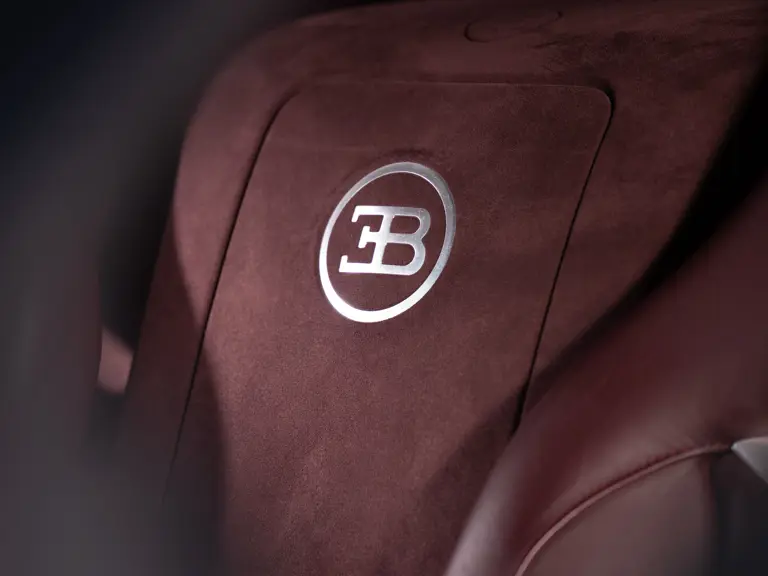
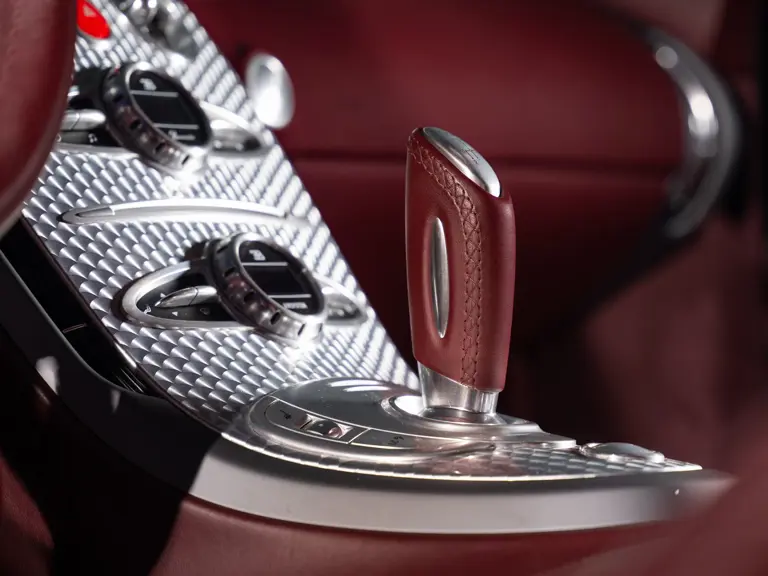
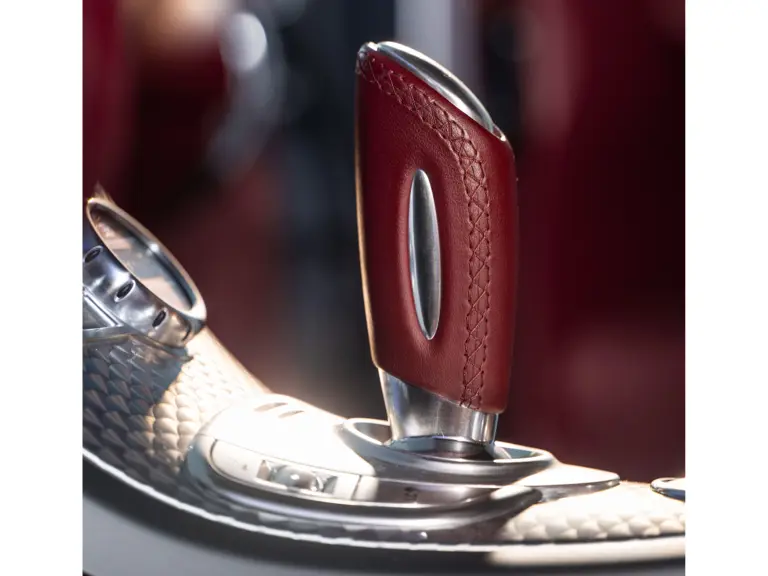

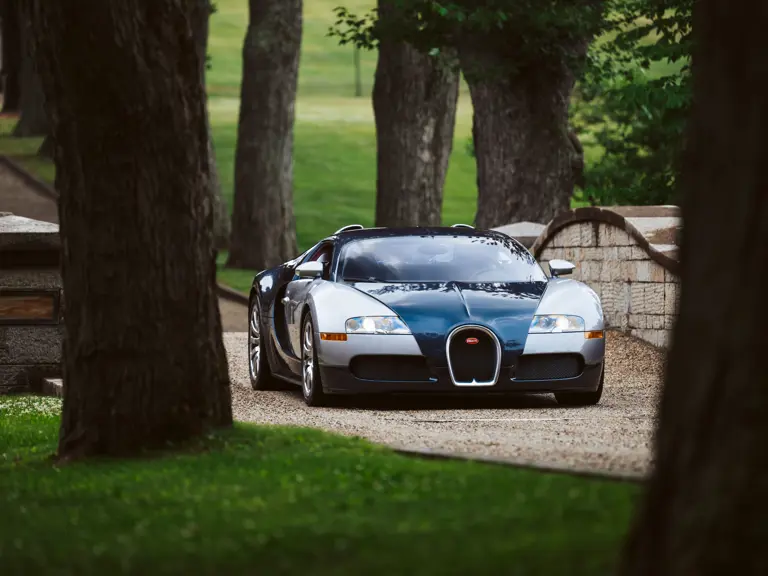

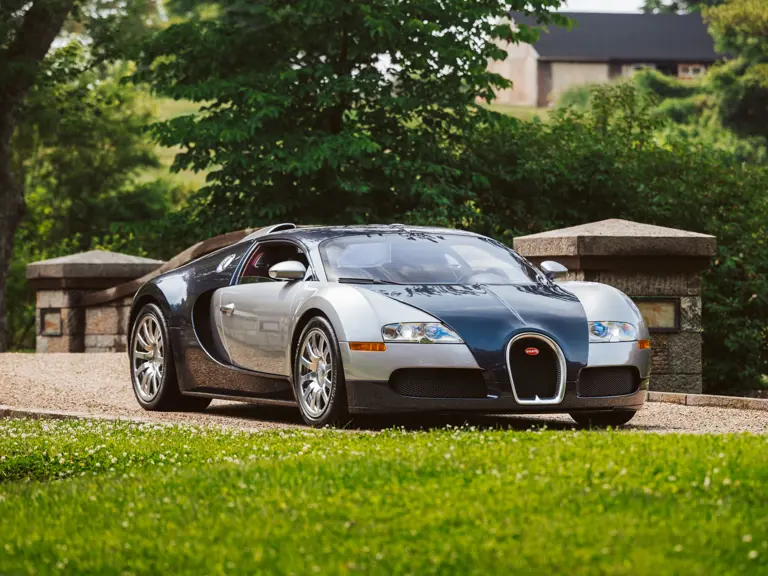
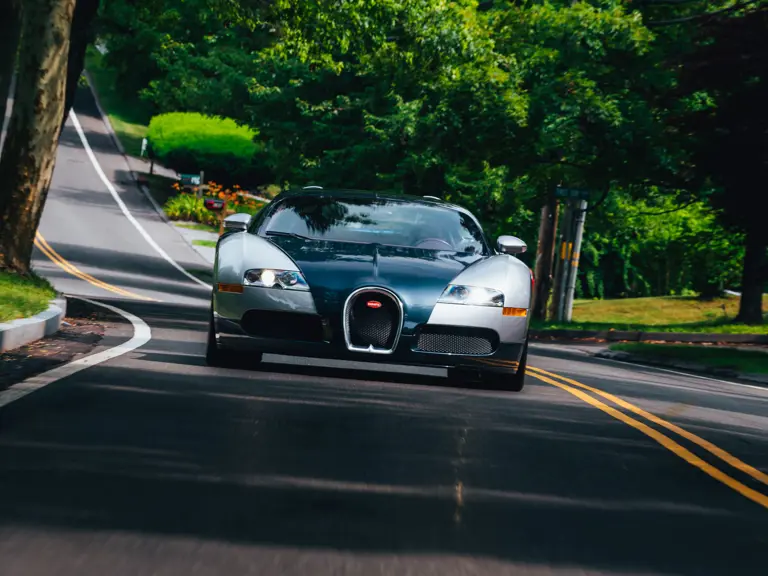
 | New York, New York
| New York, New York
